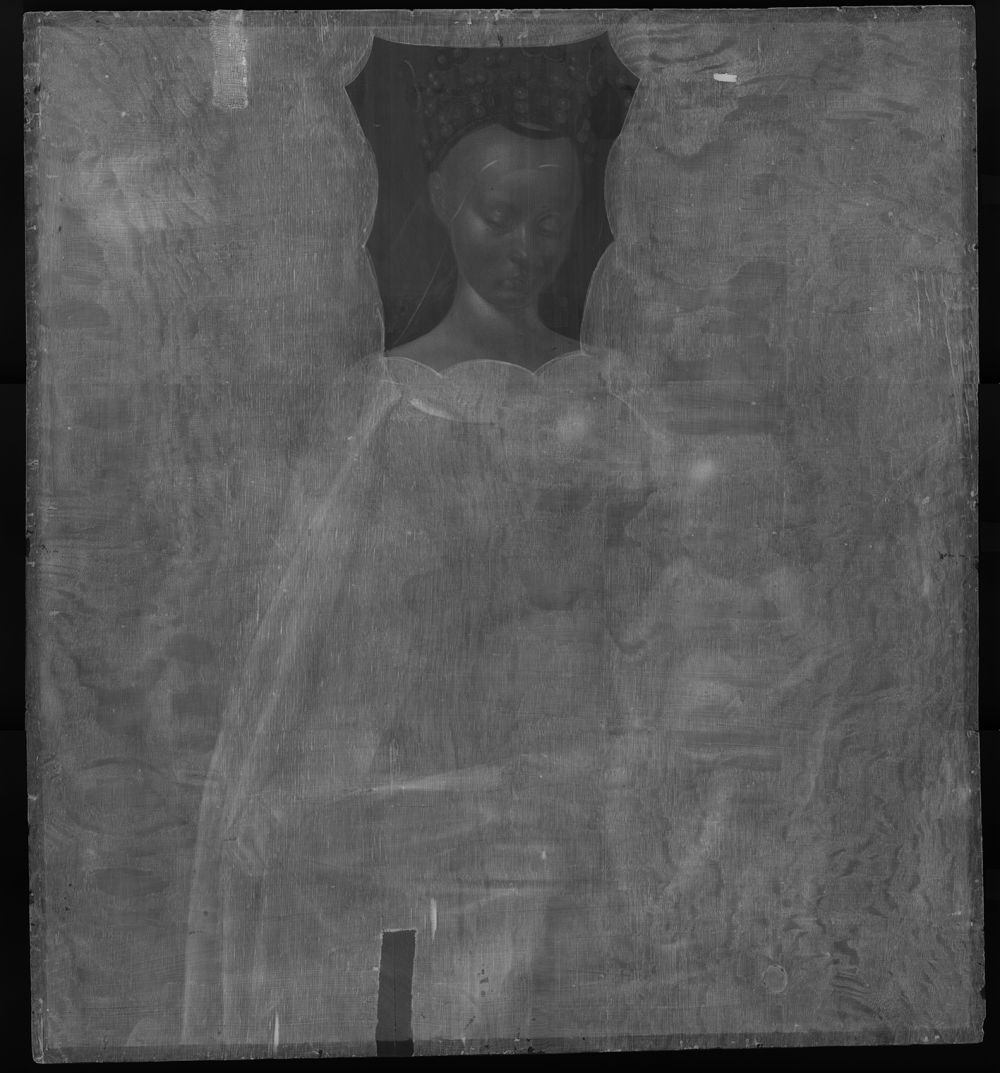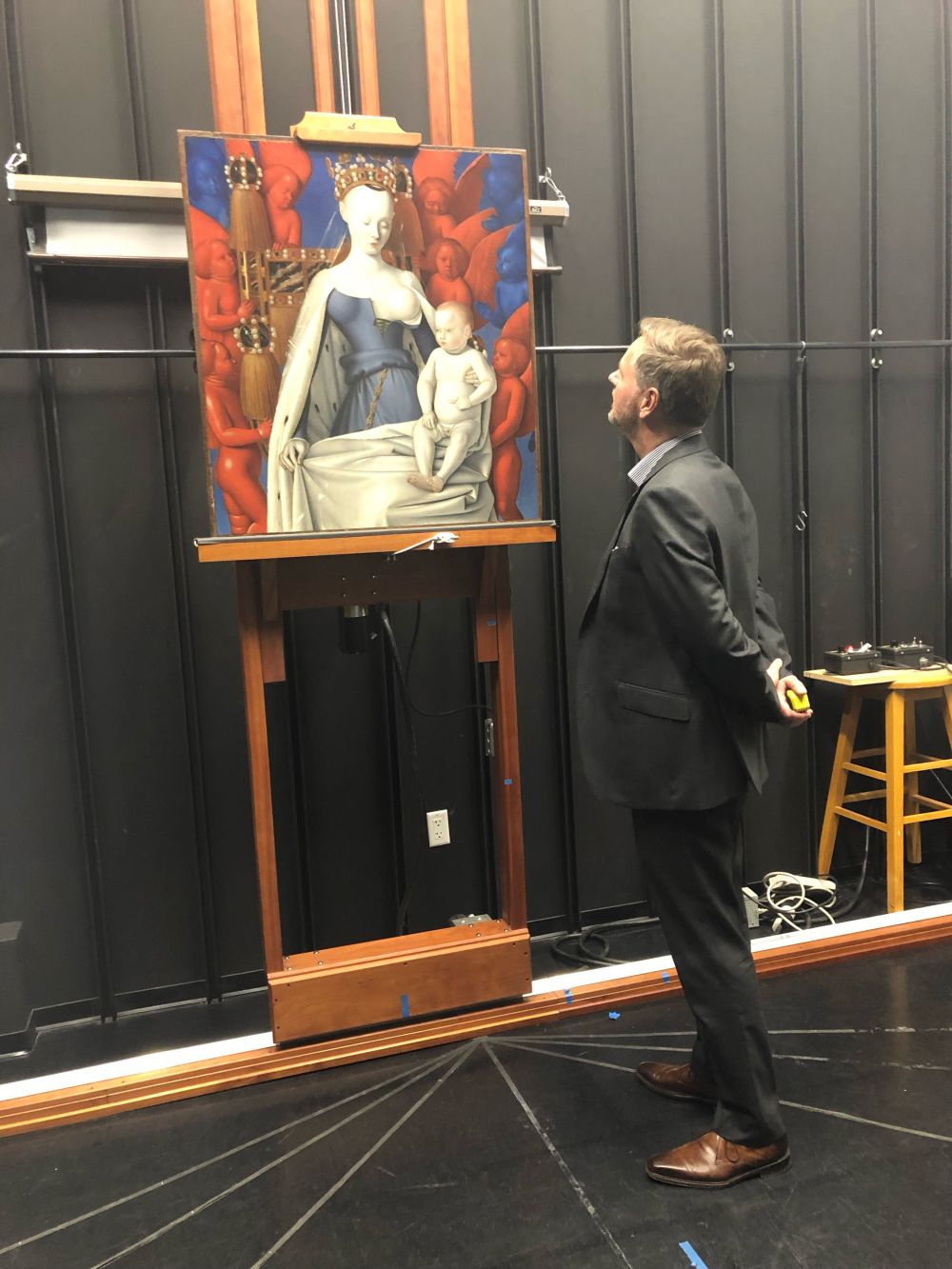Close-up: results of the Getty’s examination of our Madonna

1. Infrared images: Fouquet knew what he was doing
Infrared images reveal that Jean Fouquet made remarkably few changes as he worked on his masterpiece: there is virtually no difference between the thoroughly worked out underdrawing and the final paint layers. All the same, a few very subtle alterations were found: the space taken up by the Madonna’s cloak was slightly reduced; there are fewer pearls in her crown; the seraphim and cherubim have somewhat thinner arms; and the position of Jesus’ index finger was also shifted.

Infrared - Fouquet did not paint all the pearls in the Madonna's crown.

Infrared - The Madonna's cloak is larger in the underdrawing.

Infrared - Fouquet changed the position of Jesus’ index finger during painting.
2. Fouquet’s palette
Macro X-ray fluorescence (MA-XRF) scanning allows the presence of chemical elements such as lead, cobalt, calcium and mercury to be detected. The technique was applied to Fouquet’s Madonna, providing a good idea of the pigments he used. A layer of lead white, for instance, was detected between the ground and the finishing layer, while gold-coloured details like the Madonna’s crown were painted with a pigment containing lead and tin. The Madonna herself was painted in white lead. The team at the Getty also used fiber optics reflectance spectroscopy (FORS) to characterize some of the organic colorants in the painting. This revealed that Fouquet applied an organic red paint to Mary’s cheeks and lips. Something else that stood out was the huge amount of ultramarine the artist used. This pigment was made from ground lapis lazuli, a semiprecious stone imported from Afghanistan, which was often used in the depiction of divine subjects during the Renaissance..

Gold - For gold-coloured details, Fouquet used a pigment containing lead and tin.

Gold - For gold-coloured details, Fouquet used lead and tin.

Red - Researchers revealed that Fouquet applied an organic red paint to Mary’s cheeks and lips.

Blue - Detail of the painting under the microscope. The blue colour is made from crushed semi-precious stones.
3. X-radiography: lead white on the back
The back of the panel is covered with a thick layer of lead white dating from the early 19th century. It was presumably added to protect the panel from fluctuations in temperature and humidity. But the x-radiography also clearly shows that no lead white was applied in the area around the Madonna’s head, probably to avoid harming the inscription on the back.

X-rays - It immediately becomes clear that no lead white has been applied to the head of the Madonna.
4. Motorized easel
One final aspect that the researchers were keen to examine was the use of perspective in Fouquet’s painting. Viewed straight on, it feels like the seraphim and cherubim are holding up the throne while the Madonna leans against it. She doesn’t look terribly comfortable. Earlier studies had suggested that the panel works best when viewed from below, probably because it was originally intended as an altarpiece. The team in California put the painting on a motorized easel and raised it higher above the ground. The perspective effect kicks in at a height of 183 cm to show a Madonna sitting comfortably on her throne.

Viewed from below - The perspective effect kicks in at a height of 183 cm.



